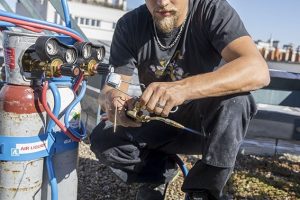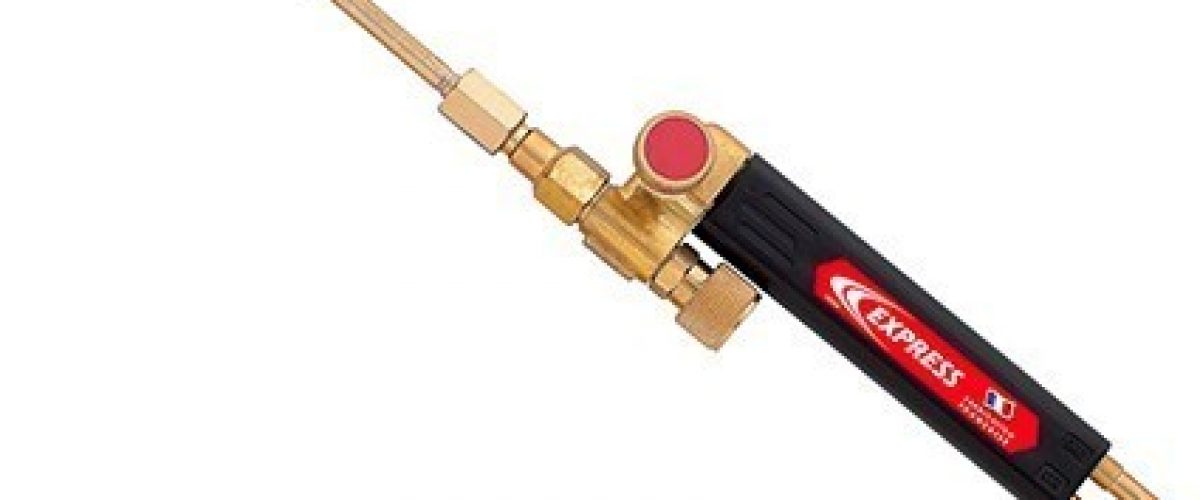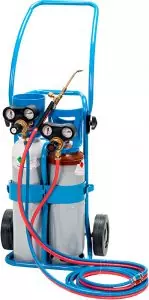The oxyacetylene torch mixes two gases and allows you to carry out a very broad range of jobs. It produces an oxyacetylene flame that can exceed 3,000 °C, using the appropriate torch and nozzle.
What is the principle of the oxyacetylene torch?
The oxyacetylene torch uses two gases: oxygen and acetylene. This combination creates an adjustable oxyacetylene flame whose temperature can rise to over 3,000 °C.
The oxyacetylene torch is usually mounted on a transport trolley which carries the two cylinders containing the two different gases. The regulators fitted to this device enable the adjustment of the flow rate of the gases and therefore the pressure of the assembly.
Each cylinder is connected by a flexible tube from the regulator to the torch. The oxygen cylinder must have a white mark and the indication “Oxy”. Its tube is blue. The acetylene cylinder should have a brown “havana” mark. Its tube is red.
The simultaneous combustion of oxygen and acetylene produces the oxyacetylene flame when you light your torch.
What are the uses of the oxyacetylene torch?
The oxyacetylene flame can rise to more than 3,000 °C, and its torch is very handy. The torch is thus suitable for welding using a filler metal, supplied by the brazing rod. It can also be used to cut sheets and tubes in any position, including vertical or upside down. Their thickness must remain below 2 millimetres.
You can use your oxyacetylene torch for brazing, and also for soldering. It is versatile and suitable for many materials and processes:
- tin soldering ;
- lead soldering ;
- Zinc welding ;
- aluminium welding ;
- copper soldering ;
- silver soldering;
- steel welding ;
- soldering with tin, zinc or lead filler metal.
With an oxyacetylene torch equipped with a second oxygen distribution, you can carry out oxycutting. This consists of cutting metals by rapid oxidation of the oxygen jet (and not the power of the jet).
Setting the oxyacetylene torch

This flow rate is indicated directly on the nozzle. The number corresponds to the number of litres per hour that will be expelled. For example, a nozzle with the number 50 means that it will deliver 50 litres of acetylene per hour.
There is a large choice of nozzles that you choose according to the work to be carried out. The most frequently used nozzles are: 50, 70, 100, 140, 200, 250, 315, 400, 500, 630, 800 and 1000 litres per hour.
The oxyacetylene torch is referenced according to the maximum flow rate it is allowed to support. This implies that you cannot use all nozzles on the same oxyacetylene torch.
The torches are listed from 00 to 2 :
- torch no. 00 for a nozzle of 140 maximum: flow rate from 10 to 140 l/h ;
- Torch no. 0 for a maximum of 200 nozzle: flow rate from 50 to 200 l/h ;
- torch no. 1 for a nozzle of maximum 140 : flow rate from 250 to 1 000 l/h ;
- 2 torch from 1,250 to 5,000 l/h, for industrial use.

